Where Do Raccoons Nest? (With Photos)
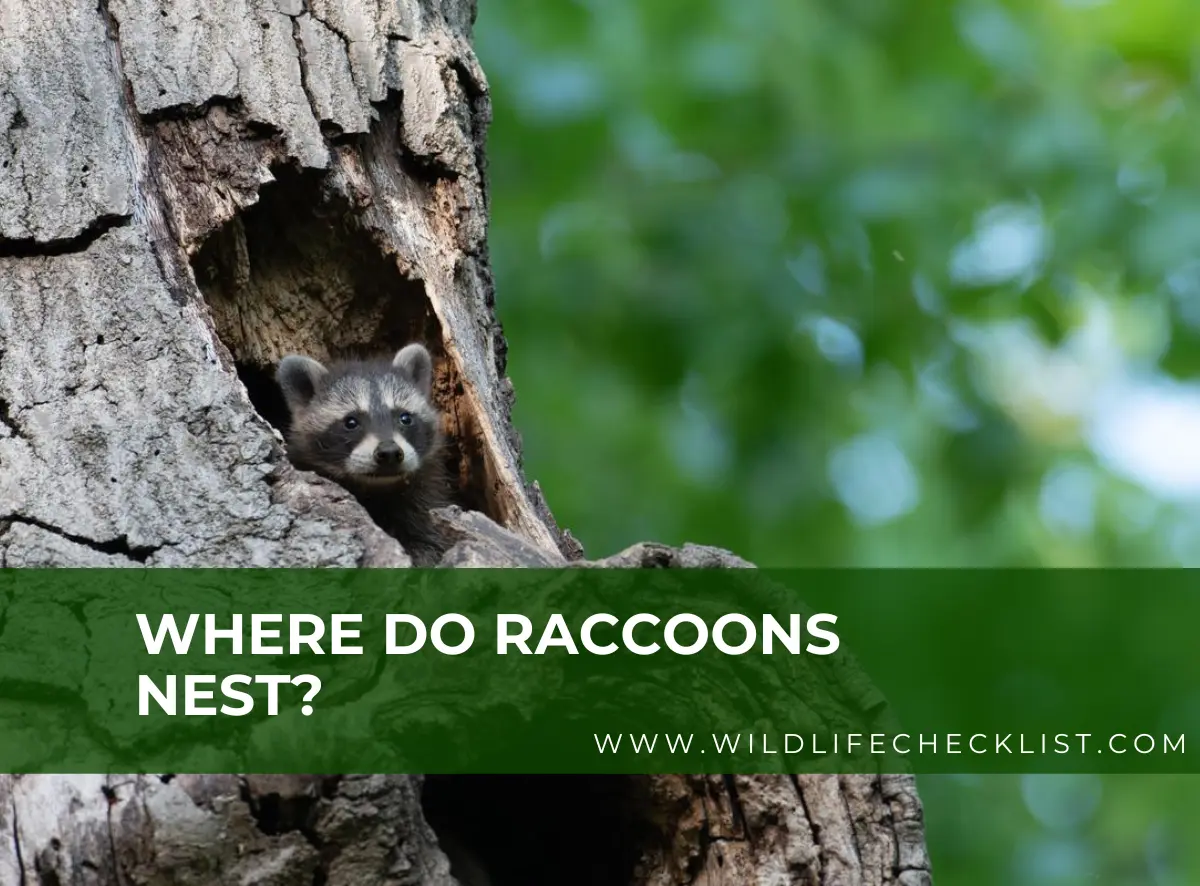
Raccoons have piqued our interest with their cunning and resourcefulness as they move through both natural and artificially altered habitats. Our attention is aroused by one facet of their behavior; the location of their nests.
Knowing raccoons’ preferred habitats and how well they can adapt to different situations can be learned from where they nest. We shall examine the various nesting practices of raccoons in this article, shedding light on the distinctive habitats they choose for shelter and raising their young.
When it comes to nesting, raccoons are remarkably adaptable, using both urban and natural environments. They show that they can use the resources at hand and locate appropriate areas that offer safety and security.
By looking at their nesting choices, we can better understand their activities and how they move through the complex environment of human-wildlife interactions.
Raccoons use a variety of environments for nesting and denning, which will be highlighted in this article. We’ll look at the variety of options raccoons have when looking for secure and cozy nesting places, from tree cavities and ground nests to man-made structures like attics, chimneys, and crawl spaces.
We can appreciate raccoons’ adaptation and tenacity as they traverse a constantly changing world by learning more about their nesting practices. Understanding raccoons‘ nesting preferences enables us to live in harmony with them and respect their territory, whether we come across them in the wild or in our neighborhoods.
So let’s explore the world of raccoon nesting and learn about the amazing places these animals call home.
Contents
Natural Nesting Sites
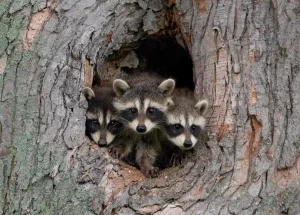
Tree cavities: Raccoons often look for hollow logs or tree cavities in their natural settings to build their nests. Predators and severe weather are kept at bay by these organic shelters. Raccoons are skilled climbers, allowing them to reach cavities in trees that may be located very high up.
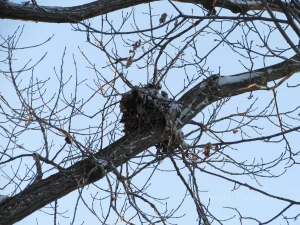
Abandoned Bird Nests: Bird nests that have been abandoned or squirrel dreys are both potential temporary nesting locations for raccoons. These buildings give a ready-made home that offers a protected area where they can raise their young.
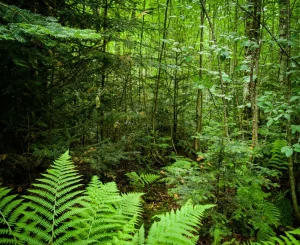
Dense Vegetation: Raccoons occasionally choose to build ground nests, which are often built in areas of dense vegetation like long grasses, brush piles, or heavy bushes. Ground nests minimize exposure to the environment while providing protection from predators. When suitable tree cavities or elevated solutions are hard to find, they are more frequently used.
Human Structures and Urban Habitats
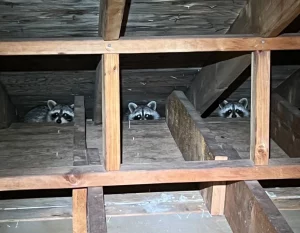
Attics: By using man-made structures as nesting locations, raccoons have shown extraordinary adaptability. Raccoons are particularly drawn to attics because they provide a cozy and private environment. They can enter attics through cracked or inadequately sealed holes and build a nest out of insulation, twigs, and other natural materials.
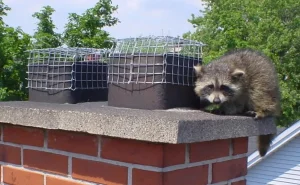
Chimneys: Raccoons may choose to build their nests in chimneys, particularly those lacking a chimney cap or enough screening. They may safely raise their young in the small, enclosed environment of a chimney.
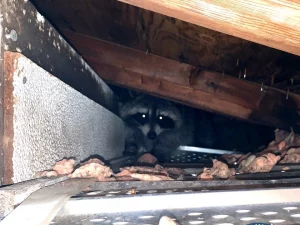
Crawl Spaces and Sheds: Raccoons are known to use crawl tunnels and sheds because of their many hiding places and low access points. In addition to providing safety, these areas can be used for nesting and denning.
Factors Influencing Nest Selection
Raccoons choose their nesting places based on various factors that affect their nesting behavior. Knowing these elements helps us better understand how adaptable raccoons are and how they can survive in many habitats. These are some important elements that raccoons consider when choosing their nest:
1. Security and Protection
Raccoons give priority to nesting locations that offer security and safety for both themselves and their young. They choose areas that offer protection from severe weather and reduce the chance of predation.
Elevated locations provide a degree of safety and protection from potential risks, such as tree cavities or man-made structures like attics or chimneys.
2. Availability of Suitable Habitat
Raccoon nest selection is greatly influenced by the availability of an appropriate environment. They search for locations with plenty of food, water, and shelter.
Their selection of nesting locations is significantly influenced by proximity to reliable food sources, such as garbage cans or naturally occurring food items, including fruits, nuts, and small animals.
3. Environmental Factors
Raccoons take into account environmental considerations while deciding where to build their nests. They choose places that are comfortable for growing their young in terms of temperature and moisture levels.
Their nesting locations are also influenced by elements, including drainage, wind protection, and sunlight exposure.
4. Proximity to Water
Because water is so important to raccoons’ existence, they are frequently found in close proximity to water sources. In order to have easy access to drinking water and a wide variety of food sources, they may choose nesting locations close to rivers, lakes, ponds, or wetlands.
5. Availability of Nesting Materials
Raccoons choose nesting locations where they have easy access to acceptable nesting materials. They may gather twigs, leaves, and other organic items from their native surroundings to line their nests.
They build their nests in human-made structures in metropolitan settings using insulation materials or other readily available materials.
We can better appreciate how adaptable raccoons are and how they may make use of a range of nesting places if we are aware of these features.
By appreciating their significance, we can put conservation measures in place to save suitable raccoon habitats and encourage coexistence with these resourceful and tenacious animals.
Do Raccoons Nest In Trees?
Raccoons are extremely adaptive animals that may build their nests in various places, including trees. They can build dens in other elevated areas, such as tree branches or abandoned bird nests.
Raccoons frequently use tree cavities or other protected locations in trees as breeding places in their native environments. These areas offer defense from the environment and predators.
Raccoons are opportunistic creatures, and the availability of acceptable shelter and food supplies in their habitat can affect how they nest.
They can be found in both rural and urban environments since they are noted for their capacity to adapt to landscapes that have undergone human influence.
Where do Raccoons Nest in Trees?
The intelligent, adaptive animals that are native to North America, raccoons, have a variety of nesting behaviors in trees.
They frequently hide out in tree hollows in their natural environments, using these safe havens for denning and raising their young.
They like older trees in particular because the larger cavities allow them plenty of activity space. Depending on availability, raccoons also use abandoned bird nests and tree branches as alternate nesting locations.
Surprisingly, raccoons have successfully acclimated to urban settings, taking advantage of man-made structures for refuge. They may use chimneys, attics, and other elevated city areas as nesting grounds.
By using both natural and man-made buildings for their nests, they can survive in environments that have been transformed by humans. Their capacity for environmental adaptation and resource efficiency is demonstrated by their ability to build their nests in trees.
What Do Raccoons Use To Build Their Nests?
Raccoons are inventive nest builders who use a range of building supplies. They frequently use leaves, grass, moss, and twigs to make comfortable bedding in tree hollows or abandoned bird nests in natural settings.
These soft materials offer comfort and insulation for their denning activities, particularly during the colder months or when caring for their young.
Raccoons employ man-made items to construct their nests in metropolitan areas. They may gather scraps of paper, plastic, cloth, and other waste to line their nests, building a temporary refuge in chimneys or attics.
Raccoons prioritize selecting secure and covert locations for their nests regardless of where they are. Their inventiveness and adaptability when it comes to building shelters are demonstrated by their capacity to adapt and use a variety of materials.
Raccoons use a combination of ingenuity and pragmatism to build nests that meet their unique needs and guarantee their survival in various habitats. They rely on both natural and artificial resources.
Conclusion
Knowing where raccoons nest shows off their amazing adaptability. Raccoons are adaptable in their choice of nesting locations, using both natural environments and man-made buildings. By knowing where they nest, we can learn more about raccoon behavior and their adaptability to different habitats.
We may promote peaceful coexistence with these smart animals by respecting and comprehending their nesting behaviors. Raising awareness of raccoons’ nesting requirements and taking action to reduce conflicts between people and wildlife can help to maintain raccoon populations and the stability of ecosystems.
Let’s respect raccoons’ adaptability as we continue to live beside them and work to preserve their nesting areas. We can ensure that raccoons can survive and contribute to the environment in the future by encouraging ethical behavior and protecting their natural habitats.




